Best Beaches on a Budget: How to Actually Afford a Beach Vacation (Without Living on Ramen for Three Months)
Last summer my friend Sarah talked about best beaches on a budget and posted these dreamy beach photos on Instagram—water so clear it looked fake, a sunset you’d swear was edited, sandy beaches, the whole postcard package. I asked which fancy resort she’d splurged on and braced for a number that would make my credit card twitch. She said her entire week cost less than my monthly grocery bill.
That was when I realized I’d been doing beach vacations wrong.
We’ve been sold this idea that beaches are either luxury or bust: you blow a paycheck or you don’t go. It’s just not true. Real, soft-sand, warm-water beaches exist at sane prices if you know when to go, where to stay, and which money traps to sidestep.
You don’t need a private butler, a “resort fee,” or a menu with six types of aioli to have a perfect beach week. You need timing, a kitchen, and the courage to say no to $50 chairs.
The Real Reason Beach Trips Feel So Expensive
Industry surveys peg the typical summer family vacation at several thousand dollars once you add lodging, flights or gas, and meals—and beaches tend to magnify each of those line items because we go exactly when everyone else does, we insist on being on the sand instead of near it, and we eat out three times a day because we didn’t book a place with a stove.
You’re not overpaying for the beach; you’re overpaying for timing and convenience. Fix those and the numbers change fast.
Finding the Best Beaches on a Budget: Why When You Go Matters More Than You Think
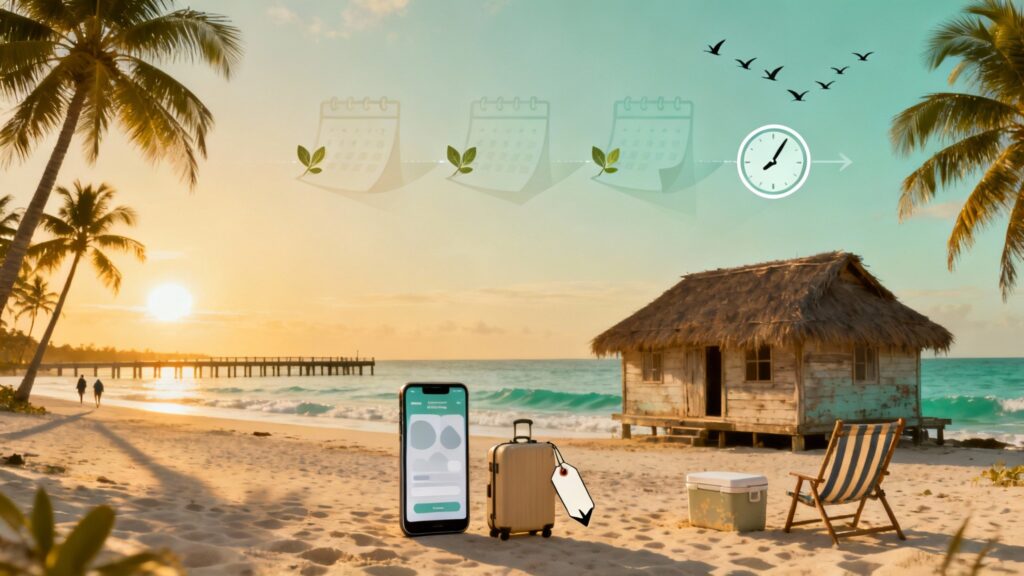
The simplest shift is also the least glamorous: shoulder season. Most beach towns have a Goldilocks window between “windy, jackets, suspicious clouds” and “packed like a sardine tin.”
That window often slices lodging rates by a third or more, the lines vanish, and you can actually hear the waves. On the Gulf Coast, think May or September instead of July. Same sun. Same water.
Fewer people stepping on your towel. If you’re tied to school schedules, nudge dates to early June or late August and avoid the bull’s‑eye of mid-July. For flights, treat Tuesdays and Wednesdays like a secret handshake with airline pricing—often cheaper going and coming.
None of this is rocket science; it’s just not how most people plan.
Actual Beach Destinations That Won’t Destroy Your Budget
Gulf Shores, Alabama
Gulf Shores sits on the same sugar-white sand and emerald water as its glitzier neighbors, minus the markup.
You can land a condo with a kitchen for less than an inland hotel room goes for at peak in flashier towns, and the vibe is more “bring your cooler” than “bring your platinum card.” Gulf State Park adds miles of beachfront and boardwalks, and if you want to go full-frugal, the campground puts you a stroll from the surf. It’s the sort of place where sunscreen lives in your cup holder and half the beach ends up in your car mats—and you shrug because the water will still be warm tomorrow.
Shoulder season here is prime: the water’s swimmable, the sun’s cooperative, and prices act like it’s Tuesday, not a holiday weekend.
Port Aransas, Texas
Texas beaches don’t always get their due, which is fine because Port A quietly thrives without pretense.
Eighteen miles of coastline, drive-on sections that make schlepping gear painless, and plenty of spots that charge normal‑people prices for lunch. Avoid peak summer and you’ll find rooms under $100 that don’t feel like you’re staying above a bait shop (unless that’s your thing).
The town runs on a laid‑back rhythm: shorts at dinner, flip‑flops everywhere, no one pretending they’re in a magazine shoot. You can fish, you can nap, you can do both and call it a day well spent.
Outer Banks, North Carolina
Don’t get spooked by fancy addresses. Yes, Duck and Corolla can run steep, but Nags Head and Kill Devil Hills are friendly to a regular budget, with wide free‑access beaches and enough rainy‑day history to keep everyone happy—the Wright Brothers memorial, climbable lighthouses, and wild horses if you head north.
The real trick here is group math: split a house with two or three families, add a kitchen, and watch the per‑person cost drop below hotel territory. My friend Tom does this every year with three other families; he swears the weekly split is cheaper than staying home and entertaining kids for seven days.
The kids form a roaming pack, the adults finish a coffee before it goes cold, and everyone remembers that vacation feeling you can’t stream.
Myrtle Beach, South Carolina
Myrtle gets a snobby reputation, but here’s the boring truth that matters to your wallet: competition keeps prices honest. Sixty miles of sand, oceanfront rooms that regularly drop below $100 off‑peak, and enough cheap amusements to make rainy hours fun. If you expect the Hamptons, you’ll complain; if you expect a solid beach with sane prices and neon mini‑golf, you’ll be happy.
Embrace it for what it is—accessible, unpretentious, and priced like an actual vacation should be.
Tybee Island, Georgia
Tybee pairs easy beach days with Savannah’s charm twenty minutes away. Park for roughly the price of a latte, wander wide stretches of sand, then head into the city for free squares, live oaks draped in Spanish moss, and small museums that don’t require you to remortgage the house.
It’s artsy without being curated to death, and shoulder‑season stays in the $100–$150 range pop up often if you book ahead. Bonus: the food scene in Savannah means dinner doesn’t have to be fried-everything (unless you want it to be).
A Quick Word on the Florida Panhandle
Panama City Beach and neighboring stretches can be zoo‑like in June, but late August into early September is a sweet spot: warm water, fewer crowds, and rates that suddenly remember gravity. If you can handle a stray afternoon thunderstorm, you’ll get a lot of beach for your budget.
Going International (Hear Me Out)
I know “international” sounds expensive; I used to think that too. Sometimes the flight stings, but after landing, prices relax so much the total week can beat a domestic trip. If you’re willing to get a passport (or dust it off), your money stretches in very satisfying ways.
Playa del Carmen, Mexico
The Caribbean blues are real, the beach is genuinely pretty, and if you steer clear of the all‑inclusive bubble, you’ll eat heroic tacos for a few dollars and sleep a short walk from the sand without your bank app crying.
We stayed in a small place a few blocks back—Carlos at the front desk gave us a handwritten list of “go here, not there.” We followed it like gospel: cenotes by day, taco stands by night, and the bill for one dinner was somehow $12 for two.
The trick is simple: smaller hotels or apartments, markets over hotel buffets, and experiences that aren’t packaged. You’ll get the same turquoise water without paying for a foam party you didn’t ask for.
Portugal’s Algarve Coast
Europe and “budget” don’t always travel together, but Portugal is the exception.
The Algarve is all dramatic cliffs, hidden coves, and gold‑sand beaches—photogenic without being precious. Rentals under $100 a night are findable outside the highest peak weeks, seafood dinners land in the “pleasant surprise” range, and the infrastructure’s easy even if your Portuguese tops out at “bom dia.”
Lagos skews lively, Albufeira family‑friendly, Tavira quiet and traditional. We budgeted like it was France and came home with leftover cash, which never happens. One night we had a table groaning with grilled fish, potatoes, salad, wine, dessert—the kind of meal that would hit triple digits elsewhere—and we paid about forty bucks total. I checked the bill twice.
Cozumel, Mexico
Cozumel’s known for diving, but it’s also mercifully priced compared to many Caribbean islands because people actually live here year‑round.
Rent a scooter for about $25, circle the island, and beach‑hop until you find your spot. The west side is calm and kid‑friendly; the east side feels wild in a good way. Beach clubs often charge a small entry that includes a chair and umbrella—less than you’d pay to rent a single chair in plenty of U.S. spots.
We stopped at a palm‑frond beach bar for ceviche under a palapa, spent fifteen bucks, and watched the water change colors for an hour. We got lost once, found a stretch of sand with no one else on it, and stayed until our towels were dotted with salt. Best mistake of the trip.
Smart Strategies That Work Anywhere
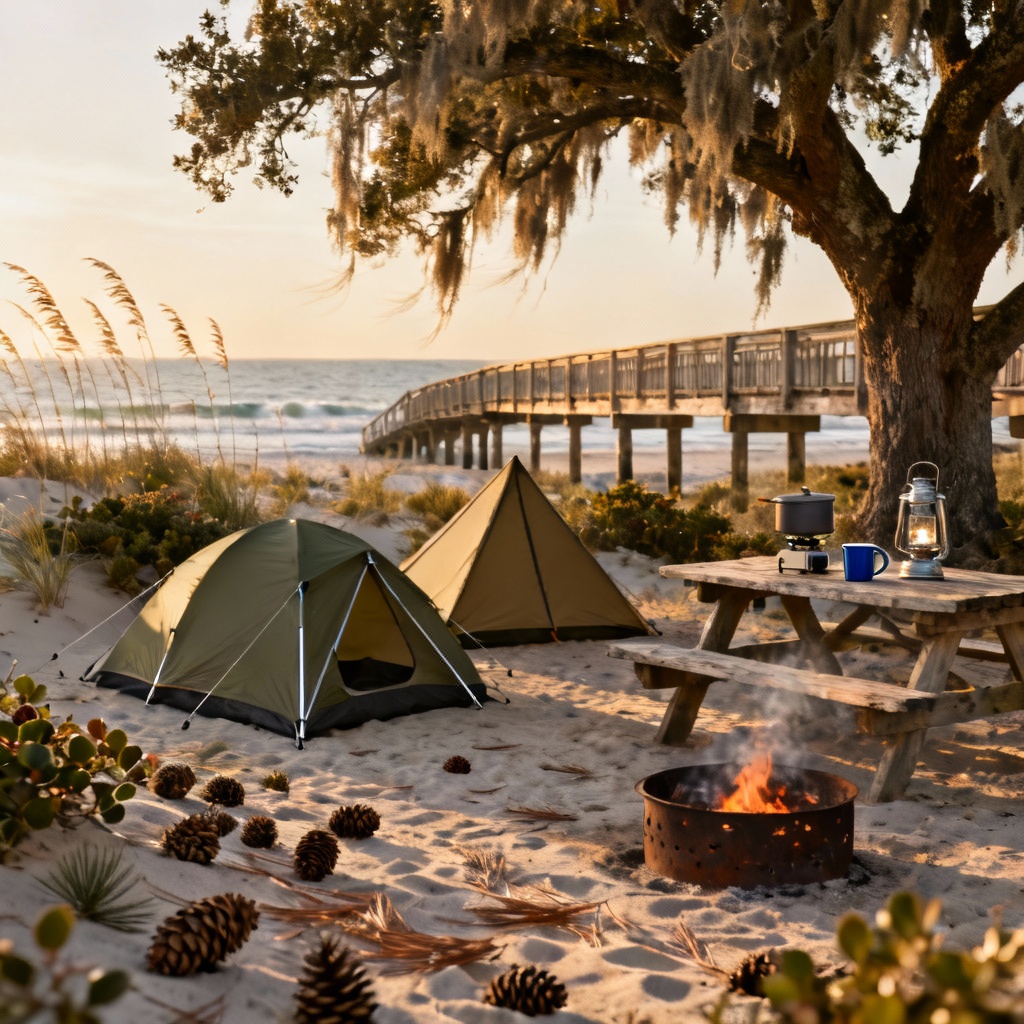
Rethinking Where You Stay
Hotels aren’t your only option—and often not the best one, unless they are budget hotels.
Apartments or small houses with kitchens change the math completely because restaurant spending is the silent budget leak. If you happen to love cooking, like I do, well this is definitely your chance to explore the local ingredients and experiment on cooking local cuisines.
Stay a few blocks off the sand and the nightly rate drops like a rock (trust me I’ve been there); the five‑minute walk is worth what you save (and you’ll sleep through the 2 a.m. balcony karaoke).
If you’re open to it, camping in coastal state parks can be wildly good value: the ocean soundtrack is free, and modern campgrounds are a lot more comfortable than the tent your parents tried to pass off as “fun” in 1997.
Mine took us to the beach in a tiny, drafty tent because hotels were out of reach; I didn’t care. I remember marshmallows and and the sight of beautiful beaches, not thread count.
The Food Factor
Eating out for every meal is how trips gently turn into a financial facepalm. Keep it simple: breakfast where you’re staying, lunch from a market or local seafood prepared from a food truck, and a proper sit‑down dinner because you’re on vacation. I tell you this, you will feel the beauty of vacation more than ever!
Pack a cooler for the beach with drinks and snacks; don’t pay $5 for a bottle of water because you forgot. We started doing this a few years back—eggs and toast in the morning, sandwiches and fruit in a cooler, then we go out at night—and the change was immediate. Suddenly dinner feels like a fun splurge instead of a math problem.
No one is asking if the fish tacos are “worth it”; we already decided dinner is where we say yes.

Activities Don’t Need to Cost a Fortune
The beach is the main event and it’s free. When you want variety, look for what a place already does for low or no cost: summer free concerts, outdoor movies, state parks with small entry fees, long walks at sunset.
I tried playing beach volleyball with other tourists on one of my vacations—turns out the sand was better at blocking than I was. But the experience was unforgettable!
Rent gear for the day or discover the charming seaside town instead of joining a tour you don’t need.
Last summer we rented two paddleboards for forty bucks and spent hours spotting dolphins and falling off with zero dignity; a guided beach trip would’ve run quadruple for the four of us and killed the comedy. Pro tip: cloudy days still sunburn. Ask me how I know.
Avoid These Budget Traps
Three things quietly drain beach budgets: gear, parking, and add‑on fees. Gear rentals seem harmless until you total them; a week of chairs and an umbrella can easily cost more than buying the basics at a big‑box store on day one and donating them at checkout. I once ran the numbers: $175 to rent for the week versus roughly $60 to buy.
We’ve bought-and-donated ever since. Parking can feel like a tax—do ten minutes of homework to find free lots farther out, early‑bird windows, or daily passes that beat hourly rates. I once fed a California meter thirty dollars just to sit on sand; I now check parking before I check the surf report. And always look at the real price of lodging: resort fees, cleaning fees, and taxes hide in the fine print.
The only number that matters is the total you’ll actually pay. If it isn’t obvious on the booking page, call and ask. Two minutes can save you the “surprise” that eats your dinner budget.
Two Quick Micro‑Itineraries (Affordable Activities with Realistic Costs)
48 Hours in the Algarve (Inexpensive Beach, High Wow)
Day 1:
Fly into Faro, take a bus or rental car to Lagos, and check into a small apartment ($80–$110 per night in shoulder season).
Grab pastries and espresso, then wander the old town.
Sunset at Ponta da Piedade’s cliffs will make your camera roll obnoxious in the best way.
Dinner is grilled sardines and house wine; expect roughly $18–$22 per person.
Day 2:
Early swim at Praia do Camilo before it gets busy, then a picnic from Mercado Municipal (bread, cheese, fruit—$12 for two).
Spend the afternoon cove‑hopping; it’s basically free cardio with scenery.
Gelato after sunset because you’re not a monster.
Day 3:
Coffee, quick swim, checkout, and a cliff viewpoint stop on the drive back. Per‑person snapshot for two nights sharing: lodging ~$120, food ~$70–$100, activities ~$0–$20, transport variable.
3 Days in Gulf Shores (Cheap Beach Town for Families)
Day 1: Check into a condo with a kitchen ($120–$160 per night shoulder season), stock up on groceries, and hit Gulf State Park Pier for sunset. Dinner is taco baskets or shrimp plates in the $12–$18 range.
Day 2: Beach day (free), and instead of renting chairs daily, buy two cheap ones and an umbrella ($60 total) and donate them at the end. Lunch from your kitchen, then Bon Secour National Wildlife Refuge for an easy, sandy trail. Shrimp boil in the condo for dinner; the kids will tell you it tastes better than any restaurant.
Day 3: Early swim, pack at a humane pace, and grab coffee to go. Per‑person snapshot for two nights sharing: lodging ~$140, food ~$60–$90, activities ~$0–$30 depending on gear.
Actually Planning Your Trip
From my own experience, I would advise that you put a real number on your vacation budget—the amount you can spend without needing a recovery period—and then reverse‑engineer the trip to live under it.
Shortlist a few destinations that fit your timeline and season; don’t fall in love with one place before you’ve checked prices across two or three.
Book the stay first because it’s the biggest lever, and favor budget friendly spots with kitchens, laundry, and honest reviews. When you read reviews, skim the five‑stars and the one‑stars and focus on the middle where people say specific things: clean, safe, matches the photos. If three folks mention it’s loud at night or parking’s a pain, believe them.
For flights, scan a calendar view (Google Flights makes this painless) and be open to shifting by a day to save real money. I usually sign up for deal alerts so I get notified, but I treat them like tips, not rules; the right price only matters if it fits your dates and sanity.
Finally, sketch a loose plan so you don’t default to expensive habits: one nice dinner out, two simple breakfasts in, one low‑cost activity, lots of beach.
Quick FAQ for Savvy Searchers
What month is cheapest for the Gulf Coast?
May and September typically deliver warm water and lower rates with smaller crowds. You’ll also find better availability and fewer minimum-stay restrictions. Early May and mid-to-late September often have the best balance of price and pleasant weather, though keep an eye on late-summer storm patterns.
Are all‑inclusive resorts cheaper overall?
Only if you’d naturally eat and drink what they bundle; in many beach towns, small hotels plus local dining are cheaper and tastier. If you don’t maximize onsite dining and drinks—or you plan to explore local restaurants—room-only or boutique stays can be better value. Check what’s truly included (premium drinks, activities, gratuities) to avoid surprise add-ons.
How do I avoid resort fees?
Filter for “no resort fee,” read the final booking page, and call to confirm the total. Some properties list fees under “taxes and charges,” so verify the nightly breakdown. Independently owned inns, vacation rentals, and smaller hotels are more likely to skip resort fees altogether.
What beach gear should I bring?
Driving: chairs, umbrella, cooler. Flying: buy on arrival and donate; it’s often cheaper than a week of rentals. Many condos and home rentals include basic beach gear—ask ahead so you don’t overpack. If you plan multiple beach days, a lightweight sunshade and quick-dry towels can save money and space.
Is travel insurance worth it?
During hurricane season or with nonrefundable rates, yes—it’s a small price for not sweating forecasts. Look for policies that cover weather-related trip interruption, flight changes, and prepaid lodging. If your plans are inflexible or your itinerary is pricey, insurance can pay for itself with a single disrupted connection.
The Bottom Line
Finding the best beaches on a budget isn’t about settling; it’s about being deliberate. The beach you’re picturing—sun on your face, sand in your shoes, towel still damp from yesterday—doesn’t require a five‑star wristband. It requires timing that dodges crowds, a place to stay that lets you cook eggs in the morning, and the patience to add up the real price before you click “book.”
The destinations here—from Gulf Shores and Port Aransas to the Outer Banks, Myrtle, Tybee, Playa del Carmen, the Algarve, and Cozumel—prove that inexpensive beach destinations aren’t code for compromise.
They’re code for value: more days on the sand, fewer moments staring at a bill. Stop scrolling past beaches you assume you can’t afford.
Pick one you can. Once you’re there—toes in the water, brain finally quiet—you won’t care that you skipped the resort’s infinity pool. You’ll be too busy watching the horizon, thinking, “We did this right.”

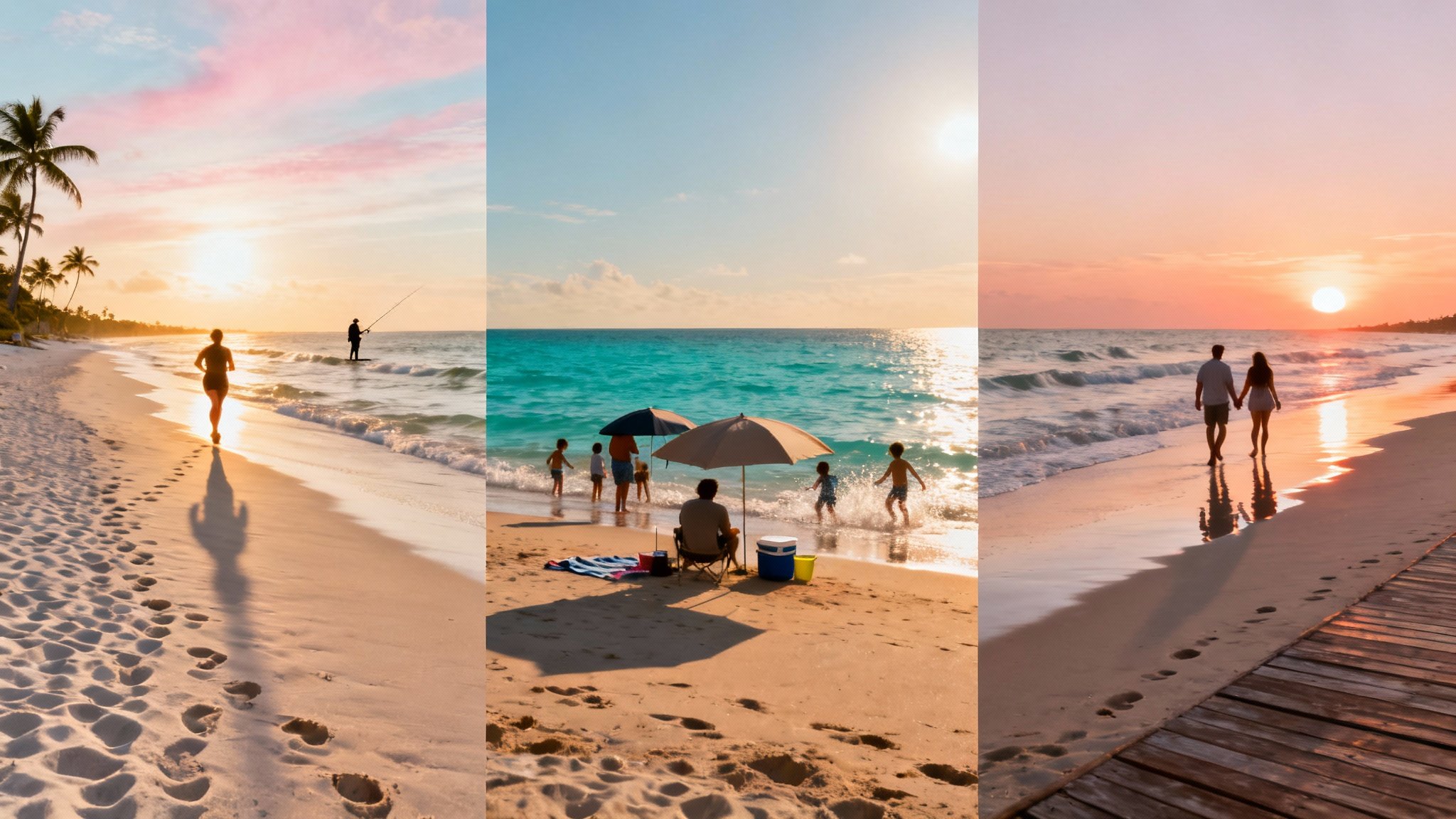




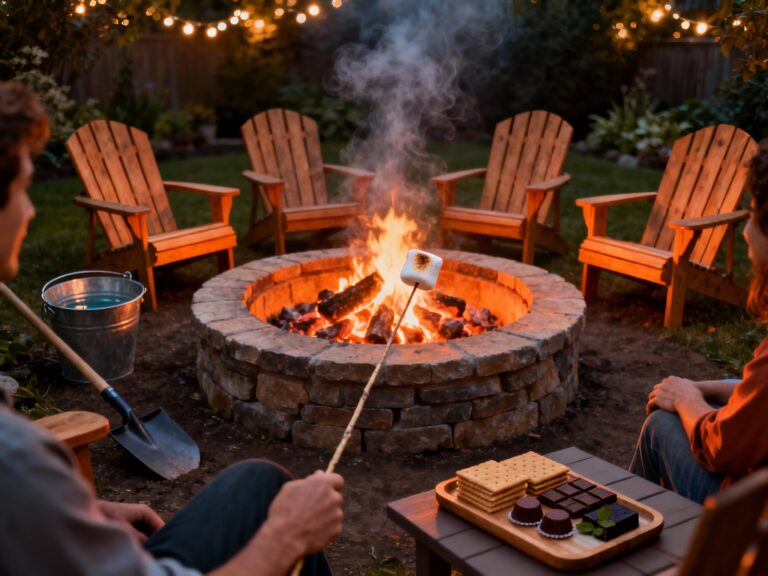
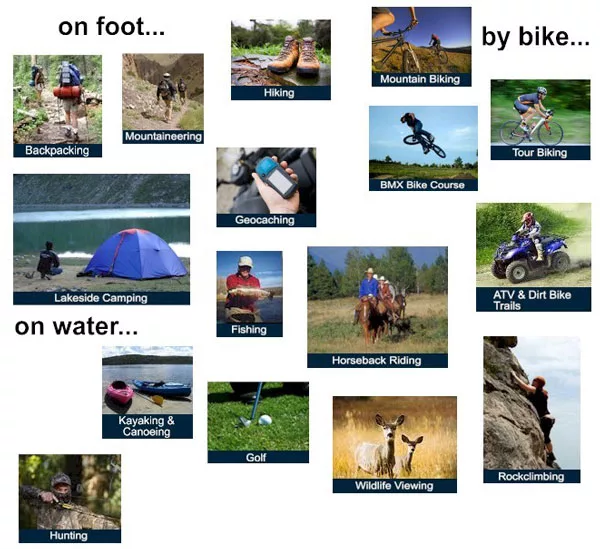
2 Comments
Comments are closed.